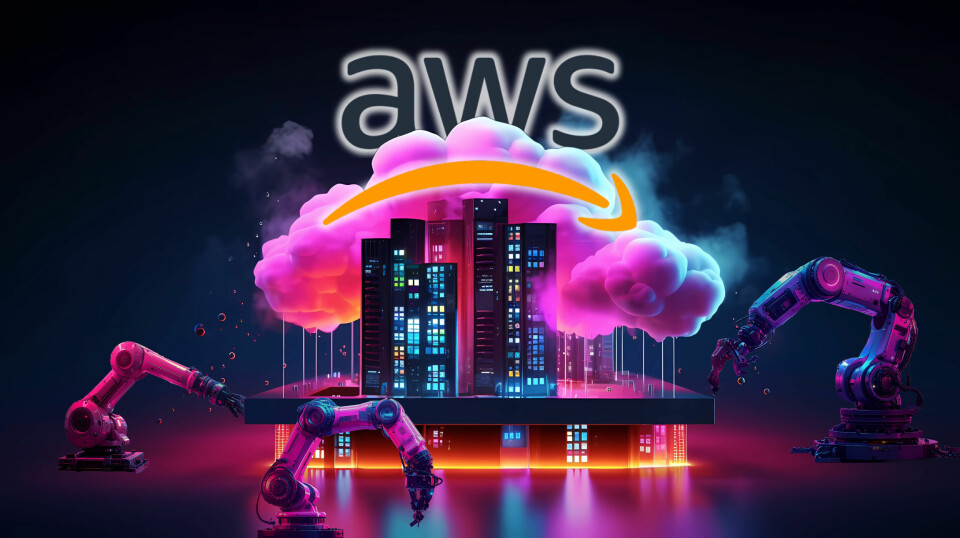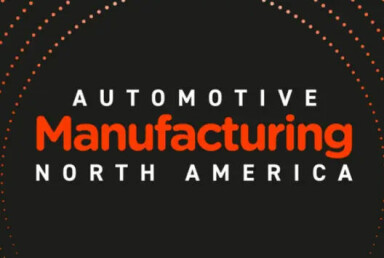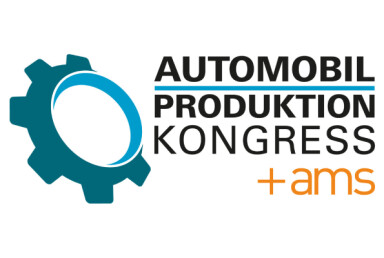Analysis: The Vulnerabilities of Connection

Amazon's AWS outage exposes automotive production's digital vulnerability
Amazon's 15-hour AWS outage affected billions in transactions globally. With major OEMs running production systems on the same infrastructure, the incident raises urgent questions about automotive manufacturing's digital resilience.
In the early hours of 20th October 2025, a technical anomaly at Amazon Web Services' Northern Virginia data centre brought much of the digital world to a standstill. For 15 hours, services from Snapchat to financial trading platforms went dark. What began as a DNS resolution error in DynamoDB cascaded into a stark reminder of modern infrastructure's fragility. By the time AWS declared all services restored at 3pm Eastern Time, the disruption had touched what analysts estimate as hundreds of billions of dollars in economic activity. The automotive manufacturing sector, which has aggressively migrated production systems to cloud platforms over the past half-decade, found itself facing uncomfortable questions. Whilst consumer-facing applications dominated headlines, the incident exposed a more fundamental vulnerability in the industry's digital transformation. When the cloud fails, what happens to the factory floor?
The hidden dependency in connected manufacturing
The answer is more complex than it first appears. Volkswagen's Digital Production Platform, built on AWS and now connecting 43 facilities across three continents, typifies this interconnected ecosystem. The platform hosts over 1,200 AI-driven applications, ranging from real-time image-based quality inspections to energy optimisation, with machine learning executed via AWS services such as Amazon SageMaker. The system integrates order intake, manufacturing and logistics to ensure seamless data flows throughout the entire process chain. It forms the foundation for deploying AI and cutting-edge IT systems across Volkswagen's global production sites.
This represents the new reality of automotive manufacturing. Production is no longer confined to physical assembly lines but extends into vast digital ecosystems where cloud infrastructure acts as the nervous system. BMW has similarly migrated data from business units and operations in over 100 countries to AWS, encompassing core IT systems and databases for manufacturing, maintenance and sales. The carmaker uses AWS to process and store millions of miles of real-time driving data whilst developing its advanced driver-assist systems. BMW uses Amazon SageMaker to build, train and deploy machine learning models in the cloud for its advanced driver-assist systems.
Even manufacturers using alternative cloud providers face identical dependency questions. Mercedes-Benz operates its MO360 digital production ecosystem on Microsoft Azure, connecting around 30 passenger car plants worldwide. At Berlin-Marienfelde, smart tightening tools automatically adjust torque settings using real-time positioning data, uploading results to the cloud for traceability. What is learned in Germany is instantly taught in the United States. But what collapses in the US, collapses in Germany, and beyond. In essence, the choice of cloud provider matters less than the fundamental architecture.
When infrastructure becomes invisible - until it isn't
However, with the AWS incident, the 20th October outage did not trigger immediate, widespread reports of automotive production halts. This absence of news is not necessarily reassuring. Modern manufacturing systems are designed with multiple layers of redundancy and local computing capability precisely to prevent complete shutdowns during cloud service interruptions. Many critical real-time operations run on edge computing infrastructure within plants themselves. Yet the lack of dramatic production stoppages obscures a more insidious vulnerability.
The incident occurred primarily during nighttime hours for North American operations and early morning in Europe. Timing matters. Had the outage struck during peak production hours, or extended beyond 15 hours into a second shift cycle, the impact could have been substantially different. Moreover, many cloud-dependent systems fail gracefully rather than catastrophically. Production may continue but only without the data flows that enable quality control, predictive maintenance alerts or supply chain coordination. The full cost of such degraded operation only becomes apparent days or weeks later.
The financial impact of this outage will easily reach into the hundreds of billions due to loss in productivity for millions of workers that cannot do their job, plus business operations that are stopped or delayed — from airlines to factories
Mehdi Daoudi, Chief Executive of internet performance monitoring firm Catchpoint, estimated the total financial impact across many industries would be immense. “The incident highlights the complexity and fragility of the internet, as well as how much every aspect of our work depends on the internet to work. The financial impact of this outage will easily reach into the hundreds of billions due to loss in productivity for millions of workers that cannot do their job, plus business operations that are stopped or delayed — from airlines to factories.” The automotive sector's exposure may be less immediately quantifiable but no less real.
The architecture of a single point of failure
Understanding why this matters requires examining how automotive manufacturers have structured their cloud dependencies. AWS's US-EAST-1 region in Northern Virginia, where the outage originated, serves as the company's oldest and largest deployment. Industry estimates suggest it handles 35 to 40 per cent of all AWS traffic globally. Many companies initially deployed applications there and never migrated, creating enormous concentration of workloads in a single geographic region.
This concentration effect amplifies throughout the manufacturing ecosystem. When Volkswagen BMW or Mercedes-Benz build production systems on AWS infrastructure using aspects such as EC2 for computing, DynamoDB for storage, Lambda for serverless functions and S3 for files, they create comprehensive dependency on a single provider. AWS promotes this tight integration as a feature whereby services work seamlessly together with integrated security, simplified management and optimised performance. Yet this integration creates shared failure modes, that is, failure in common. An outage affecting core AWS services simultaneously disrupts everything built on top.
The DNS resolution issue that triggered the cascade affected DynamoDB, AWS's database service that hosts information for companies including customer data. Amazon had the data safely stored, but nobody else could find it for several hours, leaving applications temporarily separated from their data. It was, as one expert, Mike Chapple, Faculty Director and professor of IT at the University of Notre Dame described it, “as if large portions of the internet suffered temporary amnesia.
Automotive Production & Cloud Dependency
Analysis of the 20 October 2025 AWS Outage
The Production Risks of Widespread Interconnectivity
Automotive Cloud Dependencies
Digital Production Platform on AWS connects 43 plants with 1,200+ AI applications for quality control & optimisation.
Core IT systems, manufacturing databases, and maintenance operations from 100+ countries migrated to AWS infrastructure.
Smart tightening tools at Mercedes plants automatically adjust torque using cloud data for global process synchronisation.
When OEMs & suppliers use same cloud, single outage affects entire automotive ecosystem simultaneously.
Heavy reliance on single cloud providers creates a single point of failure for automotive production systems.
Path Forward
Distribute workloads across AWS, Azure & Google Cloud to diversify risk and increase resilience.
Keep critical production operations on-premise while using cloud for analytics and development.
European push for data localisation may accelerate development of regional cloud alternatives.
Trade-off between cloud efficiency and maintaining operational independence from single providers.
Lessons from other industries' dependencies
The financial impact extended far beyond technology companies. Banking services went offline. United Airlines and Delta experienced disruptions to their booking systems. E-commerce operations ground to a halt. Canvas, the online teaching platform used by universities globally, became inaccessible, affecting millions of students. Even Amazon's own internal systems suffered, with warehouse employees unable to access critical tools during their shifts.
These disruptions in adjacent industries offer cautionary parallels for automotive manufacturing. Just as financial services have become dependent on real-time data access for transactions, modern vehicle production relies on continuous data flows for just-in-time manufacturing coordination, quality verification and supply chain orchestration. The difference is that financial transactions can be queued and processed when systems recover. Production time, once lost, is gone.
The July 2024 CrowdStrike incident, which caused $5.4 billion (£4.4 billion) in losses for Fortune 500 companies, demonstrated how software failures in one domain can cascade across entire industries. The automotive sector experienced disruptions then as well, such as Mercedes-Benz which had to halt production operations across its sites, though they received less attention than airline groundings and hospital system failures.
[The AWS-powered digital production system] is the digital nervous system of our factories
False promises: Really, how can a cloud be resilient?
Cloud providers market their services emphasising resilience, redundancy and geographic distribution. AWS operates across multiple regions globally, each containing multiple availability zones designed to provide fault tolerance. In theory, properly architected applications should survive regional outages by failing over to other regions.
In practice, the economics and complexity of truly distributed architectures mean many organisations effectively operate from a single region. Multi-region architectures require duplicate data storage, additional networking costs and sophisticated orchestration systems. For manufacturing applications that require low latency and high consistency, distributing across regions introduces technical challenges that many organisations choose to avoid.
Moreover, certain AWS services themselves operate from centralised control planes. The DNS resolution issue that triggered the October outage affected services beyond US-EAST-1 because global AWS endpoints rely on infrastructure in that region. Even organisations with multi-region architectures found themselves affected.
Volkswagen's IT chief Hauke Stars has described the Digital Production Platform as "the digital nervous system of our factories". Yet even nervous systems can suffer paralysis. When that nervous system depends on external infrastructure, the organisation's resilience becomes bounded by its service provider's resilience, or lack thereof.
The concentration risk in automotive digitalisation
The automotive industry's embrace of cloud infrastructure has occurred with remarkable uniformity. A 2024 Statista survey found that 76 per cent of global respondents ran applications on AWS, with 48 per cent of developers using its services. In automotive specifically, Mercedes-Benz, BMW, Volkswagen, Audi, Toyota and Volvo, to name a few, as well as numerous tier-one suppliers have all made substantial commitments to cloud infrastructure, whether AWS, Azure or Google Cloud. This concentration creates systemic risk. When multiple OEMs and their suppliers build on the same cloud platform, disruptions to that platform affect the entire ecosystem simultaneously.
The interdependencies become difficult to map and nearly impossible to eliminate. If a tier-one supplier's quality control systems go offline during a cloud outage, it affects multiple OEMs. If an OEM's production planning system loses cloud connectivity, it impacts suppliers across the supply chain.
The shift to software-defined vehicles intensifies these dependencies. Modern vehicles contain over 100 million lines of code. Development, testing and deployment of vehicle software increasingly occur in cloud environments. BMW's use of Amazon SageMaker to build, train and deploy machine learning models in the cloud for its advanced driver-assist systems means that vehicle capabilities themselves now depend on cloud infrastructure accessibility during development.
[The AWS outage] shows how fragile our infrastructure is ... When one data centre fails, it cascades
What the silence tells us
The relative lack of reported production disruptions from the 20th October outage may actually indicate a different problem. The automotive industry has become sufficiently dependent on cloud infrastructure that such outages are now treated as business-as-usual events requiring internal management rather than public disclosure. Carmakers have invested in redundancy and failover systems precisely to avoid needing to acknowledge when external dependencies fail. Yet this normalisation of infrastructure vulnerability comes with costs. Each incident requires staff time to manage degraded operations.
Each period of reduced visibility into production data means delayed problem detection. Each moment of disconnection from supply chain systems means operating with incomplete information. ParcelHero's head of consumer research David Jinks noted that the AWS outage has the potential to affect companies for days if it followed the pattern of the CrowdStrike incident. The global e-commerce ecosystem has been reminded how fragile online operations really are when so many companies rely on a handful of key service providers.
The path forward remains unclear
The automotive industry faces a peculiar challenge. The digital transformation that has enabled remarkable advances in manufacturing efficiency, quality control and supply chain coordination has simultaneously created new vulnerabilities. Retreating from cloud infrastructure is neither practical nor desirable since the capabilities it enables have become integral to competitive manufacturing operations. Yet the current architecture, with its concentration of workloads on single providers and in specific regions, represents an unstable equilibrium.
As cybersecurity expert, David Kennedy, founder of TrustedSec noted after the outage, “it shows how fragile our infrastructure is,” pointing to the systems redundancy, when something seemingly so small and localised can have such sweeping global impact. “When one data centre fails, it cascades,” he said.
But several automotive industry leaders have begun exploring alternatives. Multi-cloud strategies, where workloads are distributed across AWS, Microsoft Azure and Google Cloud, offer some diversification, but also introduce significant complexity. Hybrid approaches that maintain critical operations on premises whilst using cloud for analytics and development provide resilience, but sacrifice efficiency; a non-negotiable in the current carmaking climate.
The European Union's push for digital sovereignty and data localisation may accelerate the development of regional cloud alternatives. BMW's partnership with multiple cloud providers, whilst maintaining AWS as a primary platform, suggests a hedging strategy. Volkswagen's Industrial Cloud was explicitly designed as an industry platform that could work with multiple hypervisors as its digital transformation evolves.
The cost of unpreparedness
Sam Harris, Vice President at global consultancy Proxima, told reporters that supply chain risk extends beyond physical goods into digital infrastructure. Building genuine redundancy is costly, but essential for sectors where even brief downtime is unacceptable. As demand for AI and cloud services grows, outages like October's could become more common.
The automotive industry has already experienced how cyber incidents can disrupt operations. Jaguar Land Rover's 2025 HELLCAT ransomware attack forced production line shutdowns and triggered layoffs among suppliers. The incident cost an estimated $1.7 billion to $2.4 billion (£1.4 billion to £2 billion) in economic losses and exposed weaknesses in legacy credential management systems.
The difference between a cyberattack and a cloud service outage is that attacks intentionally target specific organisations whilst infrastructure failures (generally unintentionally) affect entire ecosystems simultaneously. The mitigation strategies are equally different. Security investments protect against attacks. Infrastructure resilience requires fundamentally different architectural decisions that must be made before, not after, incidents occur.
Connected manufacturing's existential question
The October 2025 AWS outage lasted 15 hours. All services eventually returned to normal operations, but the disruption will become a footnote in technology history. Yet for automotive manufacturing, it should serve as a wake-up call. The industry has built its digital future on remarkably concentrated foundations. Mercedes-Benz Chief Information Officer Katrin Lehmann has said that AI is not just a trend but is already embedded in production lines. Volkswagen's Christian Vollmer, Member of the Brand Board of Management for Production and Logistics, describes high-performance vehicle production as a key driver of success achieved through more closely integrating development and manufacturing through a shared, AI-capable data structure. BMW's migration of data from over 100 countries to AWS represents a bet on cloud-enabled innovation.
These strategies are not wrong. They are, in fact, necessary for remaining competitive in modern automotive manufacturing. But they are also incomplete. The question the industry must confront is not whether to embrace cloud infrastructure and AI-driven vehicle production systems, but how to do so whilst maintaining genuine operational independence.
The answer will likely involve uncomfortable trade-offs between efficiency and resilience, between cost optimisation and redundancy, between the benefits of platform integration and the risks of platform dependency. As factories become more cloud-connected, these trade-offs become more consequential.
For now, the automotive manufacturing sector can take limited comfort that the October outage occurred during off-peak hours and that built-in redundancies prevented widespread production stoppages. But comfort is not the same as preparedness. The next infrastructure failure may occur at peak production, may last longer, or may affect systems with less redundancy.
When that happens, the industry will discover whether its digital transformation has built resilience, or merely created new vulnerabilities. The evidence from October suggests unpleasant answers to that question.









